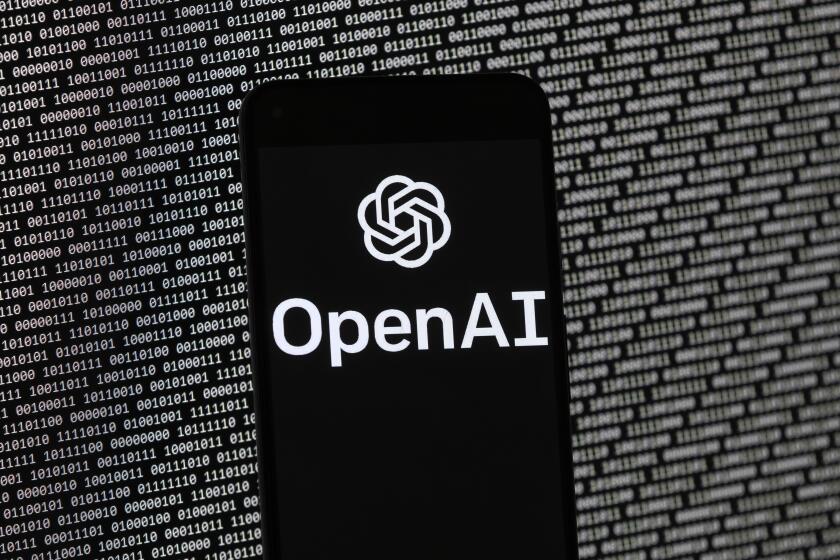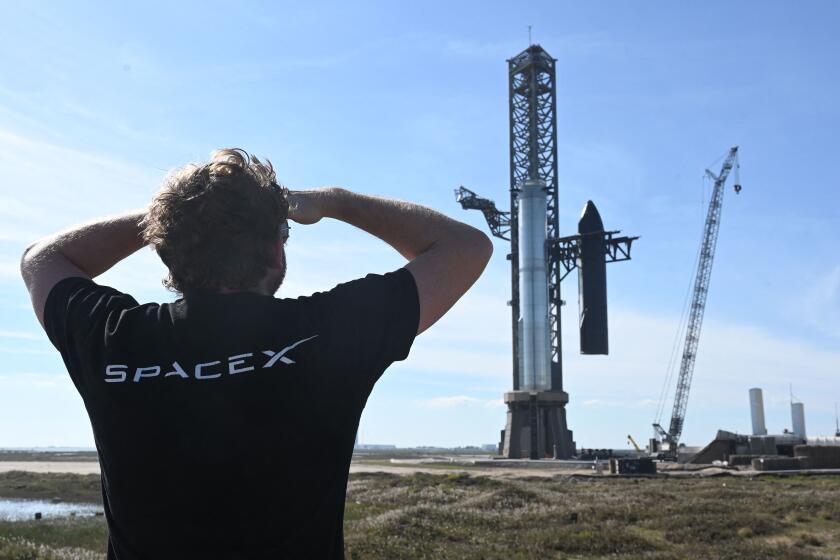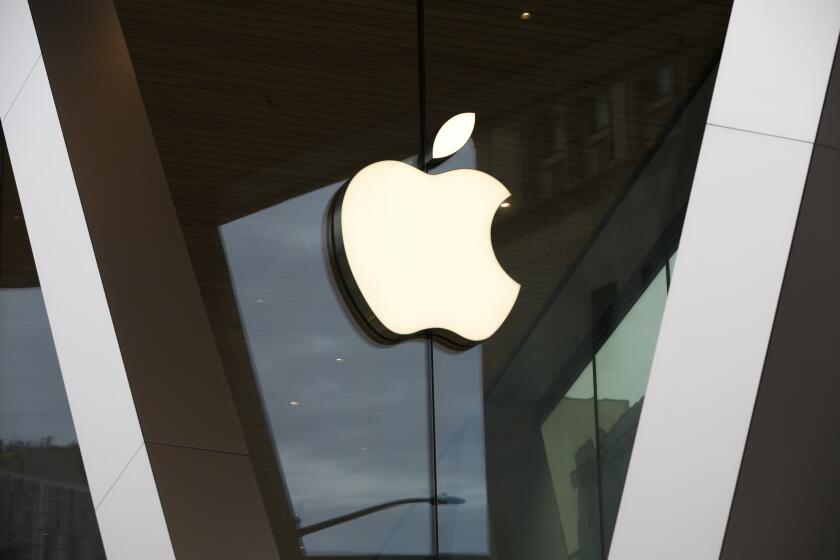For $799 and a jump in the electric bill, anyone can mine cryptocurrency
- Share via
When there’s a gold rush, sell picks and shovels.
When there’s a cryptocurrency rush, the same wisdom may well hold.
That’s the thinking behind a Los Angeles start-up that’s trying to make mining for cryptocurrency as easy as plugging in a PlayStation.
Coinmine’s first device, which begins selling Wednesday for $799, aims to be a consumer-friendly gateway to cryptocurrency mining that enables anyone with electricity, an internet connection and a smartphone to start amassing digital wealth.
“It’s not just about being easy to set up,” said Farbood Nivi, who co-founded Coinmine with industrial designer Justin Lambert. “It’s about what’s coming, and not missing out on the new promising networks like you missed out on bitcoin and ethereum in the early days.”
Coinmine says it has raised roughly $2 million (mostly in fiat currency) from big names in tech and crypto investing circles, including the investing arm of Coinbase, the largest cryptocurrency exchange, and angel investor Brian Norgard, who helped build the dating app Tinder.
The premise hinges on simplicity.
Take the gadget out of its box, plug it in, download the Coinmine app, and connect it to the internet. The app displays the current values of the cryptocurrencies that the machine can mine — ether, monero, and zcash at launch, though the company has plans to add more options as new cryptocurrencies emerge. Pick one, listen for the cooling fans to kick in, and watch the tokens slowly roll into your digital wallet (you’ll need to set that up separately).
And as it chugs along, Coinmine takes 5% off the top.
The target market is the estimated 20 million people who have opened a cryptocurrency wallet with sites such as Coinbase but do not mine it.
Some people may get lost in this idea of, ‘Where’s the ROI? How does the math work out?’
— Brian Norgard, investor in Coinmine
The idea of mining is common among the leading cryptocurrencies, and amounts to a trade: miners dedicate computing power to solving complicated math problems, or moving information across the network, and you’re rewarded with slices of currencies in return. Typically, the more people mining, the more work it takes to rack up a whole token, so newer, less valuable cryptocurrencies are easier to spin out of thin air.
Professional miners use millions of processors to earn as many tokens as possible, building server farms in cold countries with cheap energy costs such as Iceland to maximize their margins. A recent study found that even after the most recent bitcoin boom and bust sent prices crashing from a high near $20,000 per coin to about $6,000 today, miners continue to burn an estimated 2.55 gigawatts of power each year, approaching the annual energy consumption of Ireland.
Coinmine, on the other hand, operates at 120 watts, pulling about as much power as a video game console. At the average October price for electricity in Los Angeles, that adds up to a little more than $200 a year to keep the mining operation running nonstop — an outlay that Nivi estimates will bring in about one ether over the course of the year, or two to three monero. An ether currently trades for about $200; a monero about $100.
The team behind Coinmine insists that making a guaranteed return on investment is beside the point.
Nivi is cautious about giving out investment advice — “do whatever you want, that’s the whole point: individual sovereignty” — but he said it’s not worth emphasizing today’s exchange rates.
“This is the one solid piece of advice everyone in crypto shares: Don’t invest what you can’t afford to lose,” Nivi said. “That said, I strongly advise people to hold on to what they’re earning and wait for it to 10x, 100x, 1,000x.”
Norgard agrees that investors seeking a quick return should look elsewhere.
“Some people may get lost in this idea of, ‘Where’s the ROI? How does the math work out?’” Norgard said. “I think the most important thing is being able to put something in your living room to show you support the movement.”
Michel Rauchs, lead cryptocurrency researcher at the Cambridge Center for Alternative Finance, cautions aspiring miners that the computing power needed to unearth valuable amounts of cryptocurrency could make a consumer gadget like Coinmine’s a bit of a novelty.
“If you’re talking about the small machines that just mine a bit in the background the rewards are really minimal,” Rauchs said.
Nivi came up with the Coinmine concept after a frustrating experience trying to build his own crypto mining rig from scratch in the San Francisco apartment he shared with co-founder Lambert.
“I holed myself up for five days,” Nivi said. “The only time I would leave the house would be to go to Fry’s [Electronics] because I would buy the wrong component — it was a nightmare even for someone who knows how to do this stuff.”
Once the rig was up and running, Nivi said, he and roommate Lambert came up with the basic concept for the Coinmine over sushi: “What if Apple made a crypto device?”
Premade consumer models were already on the market, but most cost thousands and generate a significant amount of heat and noise to keep processors running and cooled.
Nivi set out to design a user-friendly app and a Linux-based operating system, while Lambert used a 3-D printer to create cases and checked hardware specs to find the right balance of power, efficiency, noise and cost to make an esoteric task appealing to a mass audience.
The end result looks like a small PC or a souped-up cable box.
The company plans to send out regular updates to the Coinmine operating system, both to keep up to date with the shifting blockchains underlying the cryptocurrencies it supports at launch and to add new cryptocurrencies as they come online.
The sales pitch to potential miners isn’t necessarily “get rich quick.” But seeing digital holdings pile up makes it all worthwhile, Norgard said.
“Before Tinder, online dating was this very tedious process, but swiping right and left turned it into a fun consumer game,” Norgard said. “These are dopamine engines — I check my [Coinmine] app every single day.”
Follow me on Twitter: @samaugustdean




